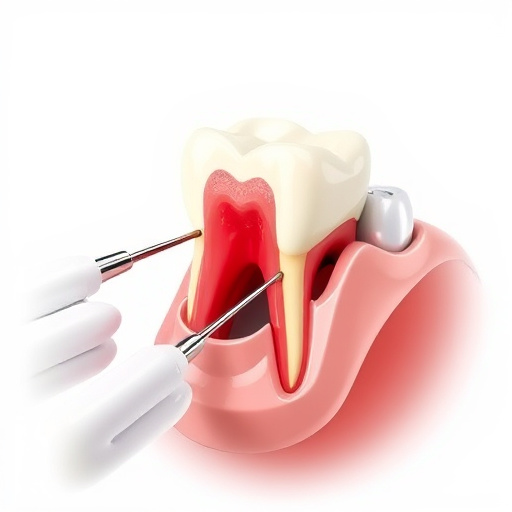Root canal treatment is a modern, comfortable procedure saving natural teeth by removing infected pulp and cleaning root canals. Neglecting this can lead to severe oral health issues, while the treatment provides relief and preserves tooth health. Advanced dental techniques and anesthetics minimize pain and speed healing, making it accessible with skilled practitioners using gentle communication and sedation options.
Looking for a way to end tooth pain without extreme discomfort? Root canal treatment offers a gentle, effective solution for saving your natural teeth. This article demystifies the process, addressing common concerns and debunking myths. We also delve into modern techniques and tips for minimizing any soreness, ensuring your root canal experience is as comfortable as possible. Discover how advanced dentistry makes this essential procedure more accessible than ever.
- Understanding Root Canal Treatment Process
- Common Concerns and Misconceptions Debunked
- Minimizing Discomfort: Modern Techniques and Tips
Understanding Root Canal Treatment Process

Root canal treatment is a procedure that involves removing infected or damaged tissue from within a tooth. This process aims to save the natural tooth and prevent the need for extraction. The treatment begins with local anaesthesia to ensure patient comfort, after which a small access hole is drilled into the affected tooth. The dentist then carefully removes the damaged pulp and cleans the root canal, eliminating any bacteria or infection.
This restorative dentistry technique is often recommended when a tooth has suffered significant decay or injury, affecting the pulp chamber. It’s commonly associated with wisdom tooth removal procedures, but it can also be used for other teeth if dental caries or trauma have reached the inner layers of the tooth. Following the root canal treatment, a filling material is placed to restore the tooth’s structure and its ability to function normally.
Common Concerns and Misconceptions Debunked

Many people avoid root canal treatment due to misconceptions about the procedure, often associating it with immense pain and discomfort. However, modern dental practices have significantly improved this experience. With advanced techniques and local anesthetics, a root canal treatment today is no more uncomfortable than getting a regular filling or dental bonding, which are common procedures in children’s dentistry.
One of the most persistent concerns is that the procedure causes intense pain. This is simply not true anymore. Dentists use advanced tools and imaging to ensure precise treatment, minimizing any discomfort. The goal is always to preserve the tooth while providing a comfortable experience for the patient. In fact, neglecting root canal treatment can lead to more severe issues, including abscesses and bone loss, which are far more painful and detrimental to oral health than the alternative.
Minimizing Discomfort: Modern Techniques and Tips

Root canal treatment has evolved to be less uncomfortable than ever before thanks to modern dental techniques and improved anesthetics. Dentists now employ advanced tools for precise navigation, ensuring minimal tissue damage during the procedure. This not only reduces post-operative pain but also speeds up healing time.
Additionally, a comfortable experience can be enhanced by choosing a skilled general or family dentistry practitioner who understands patient anxiety. They might offer various strategies like gentle communication, relaxing environments, and even sedation options for more complex cases, such as wisdom tooth removal. These approaches make root canal treatment accessible and less daunting for patients.
Root canal treatment has evolved significantly, offering patients a more comfortable experience than ever before. By understanding the process and addressing common misconceptions, individuals can make informed decisions about their dental health. Modern techniques and patient-centric care ensure minimal discomfort during and after the procedure, allowing for faster healing and long-term relief. Embracing these advancements in root canal treatment empowers folks to prioritize their oral well-being without fear or anxiety.














